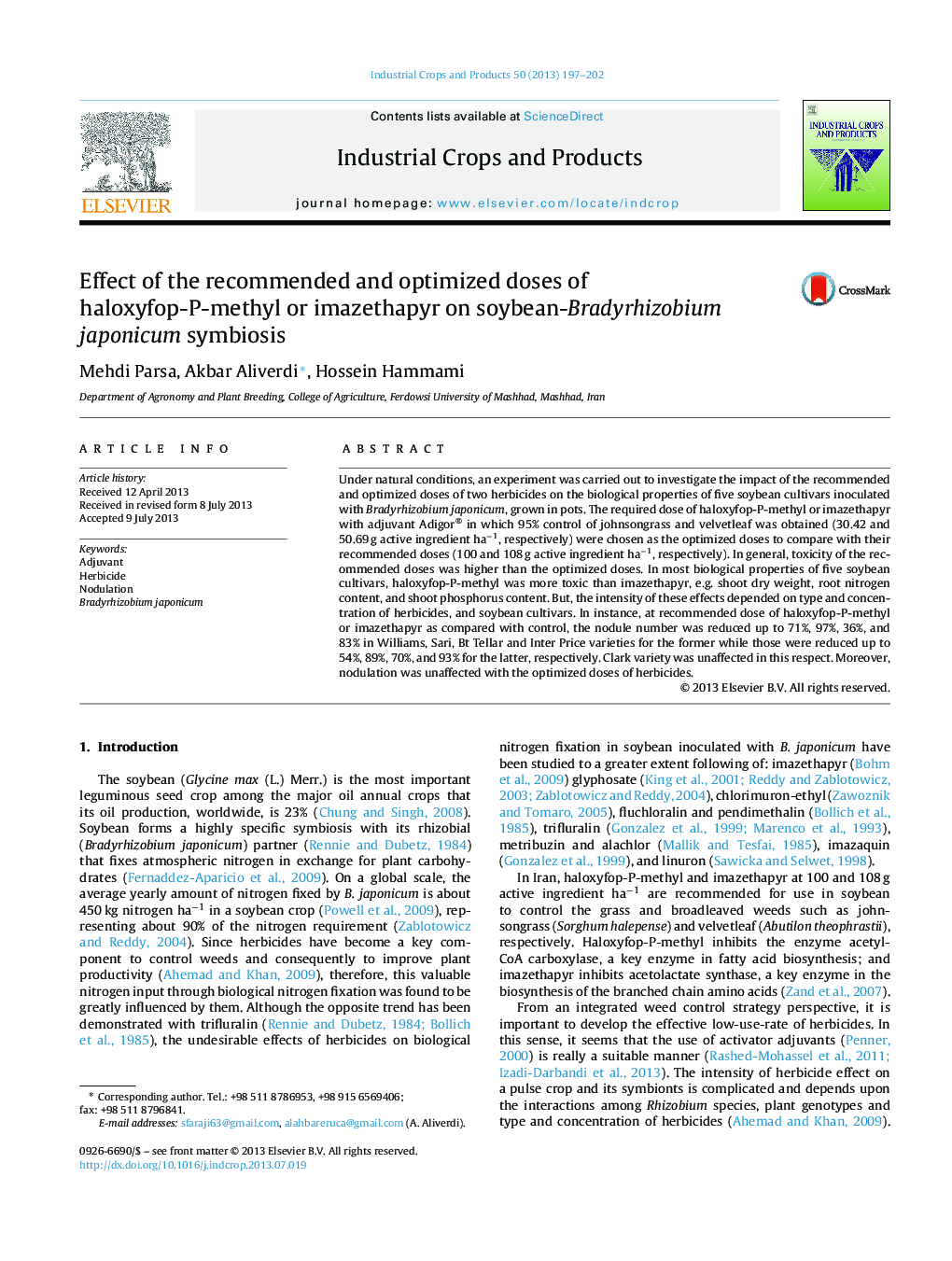| Article ID | Journal | Published Year | Pages | File Type |
|---|---|---|---|---|
| 6377054 | Industrial Crops and Products | 2013 | 6 Pages |
Abstract
Under natural conditions, an experiment was carried out to investigate the impact of the recommended and optimized doses of two herbicides on the biological properties of five soybean cultivars inoculated with Bradyrhizobium japonicum, grown in pots. The required dose of haloxyfop-P-methyl or imazethapyr with adjuvant Adigor® in which 95% control of johnsongrass and velvetleaf was obtained (30.42 and 50.69Â g active ingredient haâ1, respectively) were chosen as the optimized doses to compare with their recommended doses (100 and 108Â g active ingredient haâ1, respectively). In general, toxicity of the recommended doses was higher than the optimized doses. In most biological properties of five soybean cultivars, haloxyfop-P-methyl was more toxic than imazethapyr, e.g. shoot dry weight, root nitrogen content, and shoot phosphorus content. But, the intensity of these effects depended on type and concentration of herbicides, and soybean cultivars. In instance, at recommended dose of haloxyfop-P-methyl or imazethapyr as compared with control, the nodule number was reduced up to 71%, 97%, 36%, and 83% in Williams, Sari, Bt Tellar and Inter Price varieties for the former while those were reduced up to 54%, 89%, 70%, and 93% for the latter, respectively. Clark variety was unaffected in this respect. Moreover, nodulation was unaffected with the optimized doses of herbicides.
Related Topics
Life Sciences
Agricultural and Biological Sciences
Agronomy and Crop Science
Authors
Mehdi Parsa, Akbar Aliverdi, Hossein Hammami,
